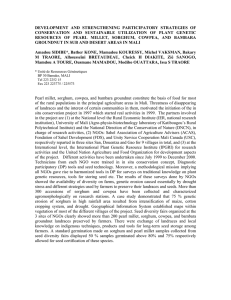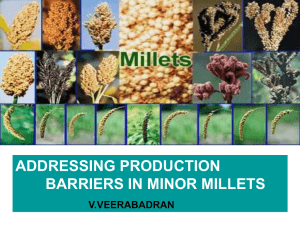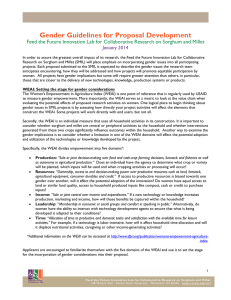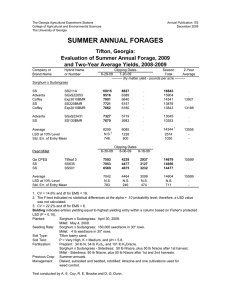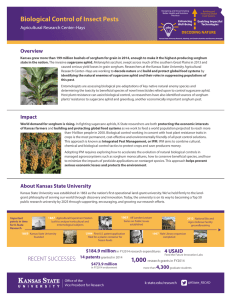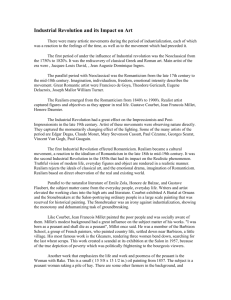Document 13273671
advertisement
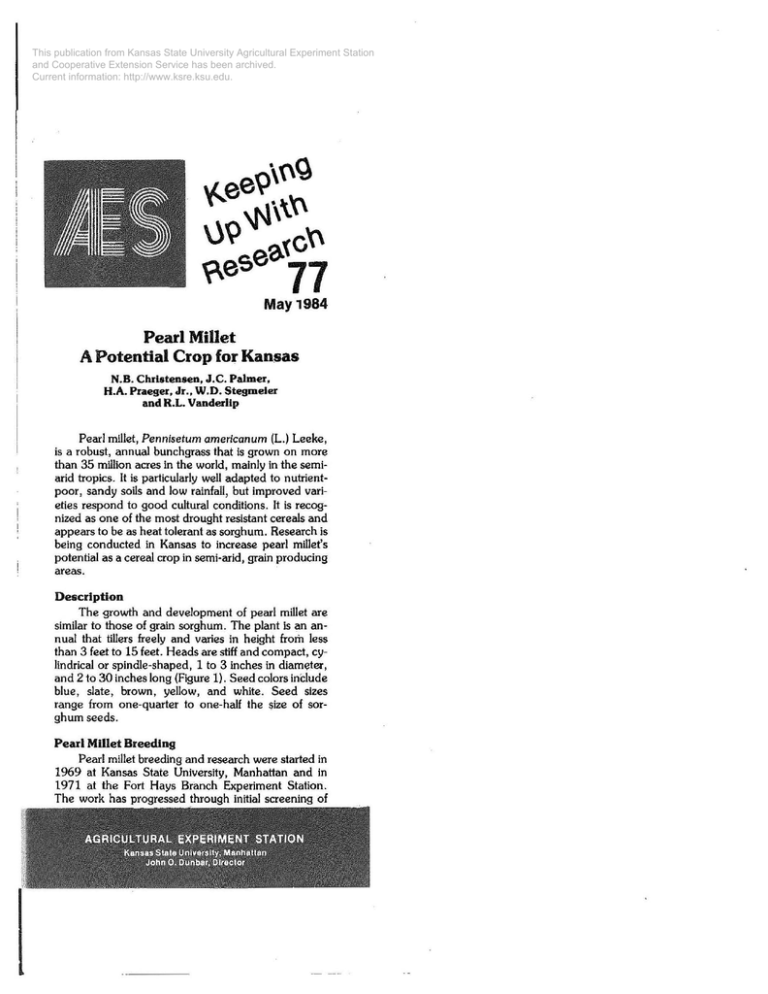
This publication from Kansas State University Agricultural Experiment Station
and Cooperative Extension Service has been archived.
Current information: http://www.ksre.ksu.edu.
Pearl Millet
Potential
Crop for Kan$as
A
N.B. Christensen, J.C. Palmer,
H.A. Praeger, Jr., W.D. Stegmeler
and R.L. Vanderlip
Pearl millet, Pennlsetum americanum (L.) Leeke,
is a robust, annual bunchgrass that is grown on more
than 35 million acres in the world, mainly in the semiarid tropics. It is particularly well adapted to nutrientpoor, sandy soils and low rainfall, but improved varieties respond to good cultural conditions. It is recognized as one of the most drought resistant cereals and
appears to be as heat tolerant as sorghum . Research is
being conducted in Kansas to increase pearl millet's
potential as a cereal crop in semi-arid, grain producing
areas.
Description
The growth and development of pearl mUiet are
similar to those of grain sorghum. The plant Is an annual that tillers freely and varies in height from less
than 3 feet to 15 feet. Heads are stiff and compact, cylindrical or spindle-shaped, 1 to 3 inches in diameter,
and 2 to 30 inches long (Figure 1). Seed colors include
blue, slate, brown, yellow, and white. Seed sizes
range from one-quarter to one-half the $ize of sorghum seeds.
Pearl Millet Breeding
Pearl millet breeding and research were started in
1969 at Kansas State University, Manhattan and in
1971 at the Fort Hays Branch Experiment Station.
The work has progressed through initial screening of
This publication from Kansas State University Agricultural Experiment Station
and Cooperative Extension Service has been archived.
Current information: http://www.ksre.ksu.edu.
over 2300 lines and varieties (obtained from the
Southern Regional Plant lntroduction Station, the
World Collection, the ICRISAT Germplasm Collection, the USDA Collection, and several tropical countries) to the present stages of development of several
populations, composites, and dwarf, early-maturing
hybrids and inbred lines.
In order for millet to be grown successfully in the
drier temperate zones at latitudes as far north as Kansas, it is necessary to convert the tropical, photoperiod-sensitive materials to early-maturing types that
can flower and reproduce under day length, precipitation , and temperature conditions of this area . It is also
necessary to introduce dwarfness, increased seed size, ·
lodging resistance, and uniform ripening to enable the
crop to be.grown with mechanical farming methods.
Yield Evaluations
Yield tests were conducted from 1979 to 1982-at
various locations throughout Kansas: Manhattan,
Hutchinson, St. John, Hays, Minneola, Garden City,
and Tribune. Eighteen Kansas experimental millet hybrids were tested and compared to commercial sorghum hybrids (three in 1979 and 1980; six In 1981
and 1982). The miUet hybrids had maturity ratings
comparable to those of sorghum hybrids used. Table 1
lists the average yield (lbs./acre) of sorghum and millet at each location for each year.
Some of the millet hybrids produced grain yielc;ls
as high as 4800 lbs./acre. Millet hybrid 80-2113
x 79-1137, developed at Fort Hays, had an average
yield of 2970 lbs./acre over all locations across both
1981 and 1982. This dwarf hybrid had one of the largest seed weights and averaged 55-59 days to half
bloom. The highest yielding millets for all locations
were 5-10 days earlier in maturity than the earliest sorghums used. The four-year average yield of all millets
was 65% of the average yield of the commercial sorghum hybrids (Table 1). However, the four-year average yield of the top three millets was 84% of the average yield of sorghum.
Sorghum had better stand establishment and
plant population, but millet h~d a greater tillering
ability to compensate for lower plant populations. At
harvest, millet had the greater number of heads per
acre.
Seed weight of millet was about one-quarter
to one-half that of sorghum. Sorghum seed weight
varied _more with changing environmental conditions
than that of millet.
Studies also showed the water-use efficiency
- !
This publication from Kansas State University Agricultural Experiment Station
and Cooperative Extension Service has been archived.
Current information: http://www.ksre.ksu.edu.
Table 1. Yield of pearl millet compared to sorghum, 1979-1982.
1979 (lbs. I acre)
Crop
Manhattan Garden City
Sorghum
MUlet
Avg. Top3
Millets
Hays
Minneola
St. John
Tribune
Avg.
6057
293-.
3443
2041
4454
3113
3092
2188
1939
1594
4663
2999
3941
2479
3516
3095
2761
2761
2160
3930
3037
1980 (lbs. l acre)
Crop
Manhattan Garden City
Sorghum
Millet
Avg. Top3
Millets
2201
1801
1194
761
2641
1()16
Hays
Minneola
St. John
Tribune
Avg.
2550
1468
2593
2053
1307
1364
4067
3598
2318
1840
2106
2523
1736
4625
2441
1981 (lbs./ acre)
Manhattan
Crop
Hays
Minneola
St. John
Tribune
Avg.
_Q!}'_
lrrig.
Sorghum
6949
3343
MU!et
Avg. Top3
4898
Millets
7271
3099
5140
3872
4898
2665
2178
1762
5582
1906
5336
2774
4442
4218
3679
2527
3196
3826
1982 (lbs. I acre)
Crop
Figure 1. Pearl millet heads.
Manhattan
_Q!}'_
Sorghum 4398
Millet
3114
Avg. Top3
Millets 3862
{yield/ water use) of sorghum to be greater than that d
pearl millet, both for grain and total dry matter' even'
though ·sorghum used slightly more water than pearl
millet. The primary reason for this greater efficiency by
sorghum was its higher yield.
A major cause of reduced grain yield of millet was
poor seed set. One form of sterility appears to be induced by temperatures below 56-58 F during the early
boot stage of development. Low temperatures at this
stage may interfere with the development of the pollen
mother cells or early stages of meiosis, resulting in
aborted pollen grains.
Pl~nting
Dates and Rates
The millet hybrids tested were planted within the
first two weeks of June and reached half-bloom by
August 15'. Physiological maturity (maximum grain
weight) occurred approximately 25-30 days after flowering.
Garden
City
Hays
Hutchin son
Minneola St. John Tribune
Avg.
~
5032
3747
2621
2181
4126
3209
2786
1985
2927
2464
3576
2065
2075
1336
3442
2512
4253
2491
3725
2222
2913
2468
1944
2984
)
,
)
The small seeds of millet caused problems in
establishment when conventional surface planting equipment was used. These problems were increased in heavier soils where crusting can occur. A
seeding rate of 50,000 seeds/ acre (1 lb/ acre) was
used, with a 50% rate of establishment observed. Planting depths were the same as for sorghum, 1-3 inches,
depending upon soil texture and moisture depth.
·- ~tand
Weed Control
Tolerance of pearl millet seedlings to propazine,
terbutryn, or blfenox applications was excellent 10 days
after treatment. Pearl millet seedlings also showed excellent tolerance to atrazine when grown in heavier
soils, but atrazine could not be used on sandy soils.
Emergence of pearl millet was severely reduced by
propachlor or butylate plus R-25788 applications and
was prevented by propachlor applications in combination with other herbicides or EPTC plus R-25788 ap-
This publication from Kansas State University Agricultural Experiment Station
and Cooperative Extension Service has been archived.
Current information: http://www.ksre.ksu.edu.
Table 2. Rolled millet compared to rolled sorghum for fin·
ishlng steers, March 22 to July 13, 1984 (114
days).
plications. In the yeld trials, propazine gave good control of most annual broad-leaf weeds and fair to poor
control of annual grasses.
Treatment
Item
Sorghum
Millet
Number of head
Initial weiqht, 11:).
Final weight, lb.
Total gain, lb.
Average daily gain, lb.
Carcass data:
Dressing percent
Backfat, ln.
Energy density, C/ g
Energy gain, Meal/day
Marbling score
Percent choice
Percent liver abscesses
Average feed intake lbs.:
Sorghum sUage
Grain
Soybean meal
Urea
Bovatex premix •
Total dry matter
Lb. gain/100 lb. feed
Gain net energy, Meal/kg
NE(m)
NE (g)
34.00
739.40
1057.70
318.30
2.79
16.00
732.80
1064.00
331.20
2.90
63.90
.53
4.27
6.84
4.74
79.00
20.00
64.70
.60
4.34
7.18
4.66
67.00
56.00
12.57
19.30
.49
.08
.55
20.42
13.20
12.23
19.30
.27
.03
.55
20.15
13.95
2. 10
1.39
2.22
1.45
• Premix Includes 300mg Bovatec, 50g ammonium sulfate, lOOg limestone,
Vitamin A, lg niacin and trace minerals.
Pearl Millet for Livestock Feed
Nearly all of the world's crop of pearl millet grain
is consumed as food for humans and very little information is available concerning its use in livestock rations. When compared to sorghum grain, pearl millet
grain has higher levels of both fat and protein, and the
protein has a better balance of amino acids. Preliminary studies at Fort Hays showed that steers fed millet
gained as well as those fed sorghum (Table 2). Estimated net energy of millet was 4 percent higher than
that-Of finely rolled sorghum . Pearl millet is an excellent source of protein for beef cattle rations. In other
trials, steers were fed enough millet (16% crude protein) to permit omitting soybean meal and urea from
the ration . Millet grain, when used with Rumensin in
growing rations for calves (Table 3) , gave significantly
higher daily gains than sorghum .
Conclusions
Pearl millet has the potential of being an alternate
crop in the semi-arid, grain producing areas. Evaluations have shown yields as high as 4800 lbs./acre and
top yields averaging approximately 80% of sorghum
yields. Weed control can be obtained through cultivation and applications of propazine, terbutryn or
bifenox. Furthermore, pearl millet is an excellent protein source and growing ration for livestock.
Table 3. Rolled millet compared to rolled sorghum in hig'
·
silage growing. rations.
Treatment
Control
Item
Sorghum
Number of cattle
Average initial wt.lb.
Average final wt. lb.
Average gain, lb.
Average daily gain, lb.
Average daily ration, lb.
Sorghum silage
Rolled milo
Rolled millet
Soybean meal
Premix
Air-dry total
Lb. feed/100 lb. gain
30.00
507.00
805.30
298.30
2.46
41.78
4.00
Millet
Rumensin'
Sorghum
Millet
29.00 30.00 30.00
509.40 506.90 506.40
799.70 793.10 820.90
290.30 286.20 314.50
2.40
2.36
2.60
39.65
39.31
3.99
Acknowledgements
This research and evaluation were conducted with the
support of Jim Ball, J.R. Brethour, Roy E. Gwin Jr., Tom
Harvey, Edward T. Kanemasu, Marvin Lundquist, Loren
Mosier, Oliver Russ, G.R. TenEyck, and Merle Witt and
partially funded by Contract AID/DSAN-G0149, Agency
for International Development, TITLE XII, INSORMIL.
Contribution 84·413·8, Department of Agronomy
and fort Hays Branch Station
38.58
4.66
4.66
1.25
.58
1.25
.58
.31
.31
.41
.41
19.52 18.89 18.79 18.62
811.00 791.00 803.00 743.00
• No endorsement is intended, nor Is any criticism implied of similar product
not mentioned.
Agricultural Experiment Station, Manhattan 66506
I1 ¢:§Qj Keeping Up With Research 77
May 1984
· Publication and public meetings by the Kansas
KANSAS Agricultural Experiment Station are available and
~ open to the public regardless of race, color,
~TY national origin, sex, or religion.
5-84-3M
·
